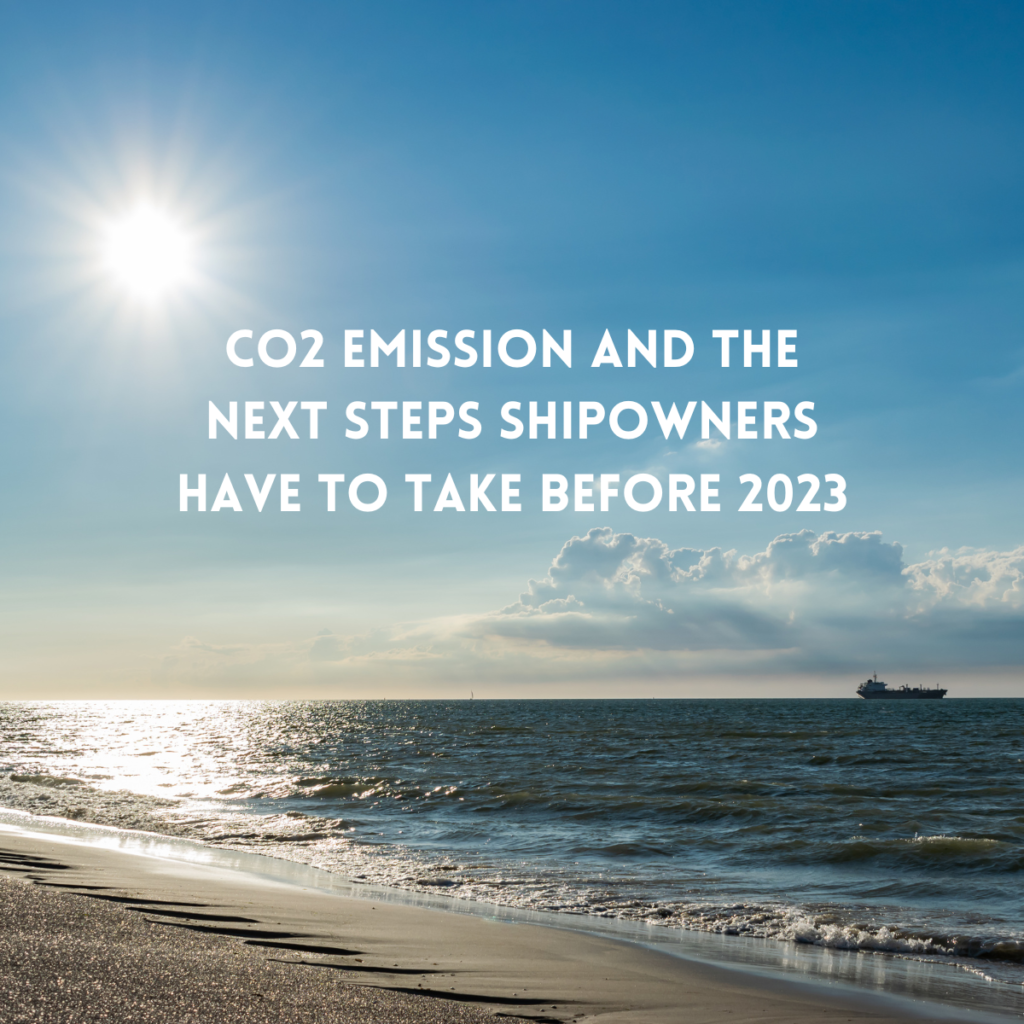CO2 Emission and the next steps shipowners have to take before 2023
Maritime transport is the backbone of international trade, but it has also attracted much attention for its significant negative environmental impact. In fact, the maritime transport industry accounts for 3% of global greenhouse gas (GHG) emissions.
For that reason, the International Maritime Organization (IMO) has been focused on cutting greenhouse gas emissions from the shipping industry, and has been putting that strategy to work since the 15th of July 2011, when the first set of international mandatory measures to improve ships’ energy efficiency was adopted, as part of the International Convention for the Prevention of Pollution from Ships (MARPOL). These new laws impose the Energy Efficiency Design Index (EEDI) for new ships, and the Ship Energy Efficiency Management Plan (SEEMP) for all ships.


These sustainability measures combine many technical and operational approaches, to significantly improve the energy efficiency of ships. They ensure that all ships must calculate their Energy Efficiency Existing Ship Index (EEXI), and ships over 5,000 gt will establish their annual operational carbon intensity indicator (CII) and CII rating.
Based on a ship’s CII, its carbon intensity will be rated A, B, C, D or E (where A is the best and E is the worst). The rating indicates a major superior, minor superior, moderate, minor inferior, or inferior performance level. And according to the rating obtained, the ships will be allowed to or prohibited from sailing.
There is very little leniency offered for ships, so it is vital to get calculations done correctly every year. Vessels graded D have a three-year grace period during which the ship owner has to get back into compliance, and those graded E have only one year to do so.
It is important to note that the grading criteria will only become tougher every year: The IMO is mandating a 2% annual improvement in AER from 2023 through 2030. Thus, a ship may start with a B grade in 2023, but if no changes are made after a few years, it could automatically become a D. Moreover, if the ship owner cannot comply, the vessel will have to be removed from service and most likely scrapped.
Another reason adding urgency to ship owners is that the European Union has agreed to add shipping to its carbon market for the first time, forcing vessels to pay for their planet-heating emissions and increasing pressure on the maritime sector to invest in greener technologies. So the better your ship’s grade, the better your ship’s future is.
To improve a ship’s grade, owners can:
- Switch to fuels that generate less CO2, like biomethanol or liquified natural gas (LNG).
- Make the necessary technical refinements such as upgrading the ship’s engines and adding emission controls, retrofitting the engine so that the ship can use alternative fuels, making changes to optimize the flow of water around the hull, or polishing or upgrading propellers.
- Implementing speed and routing optimization.
- Installing low energy light bulbs and/or solar/wind auxiliary power.
Do you still have some questions? You can download the regulations and guidelines of the revised MARPOL Annex VI and check out all of the rules and regulations in detail.

Leave a Reply